It seems we can’t find what you’re looking for. Perhaps searching can help.
Sign Up for newsletter!
Subscribe to get the latest eBook!
Hotline






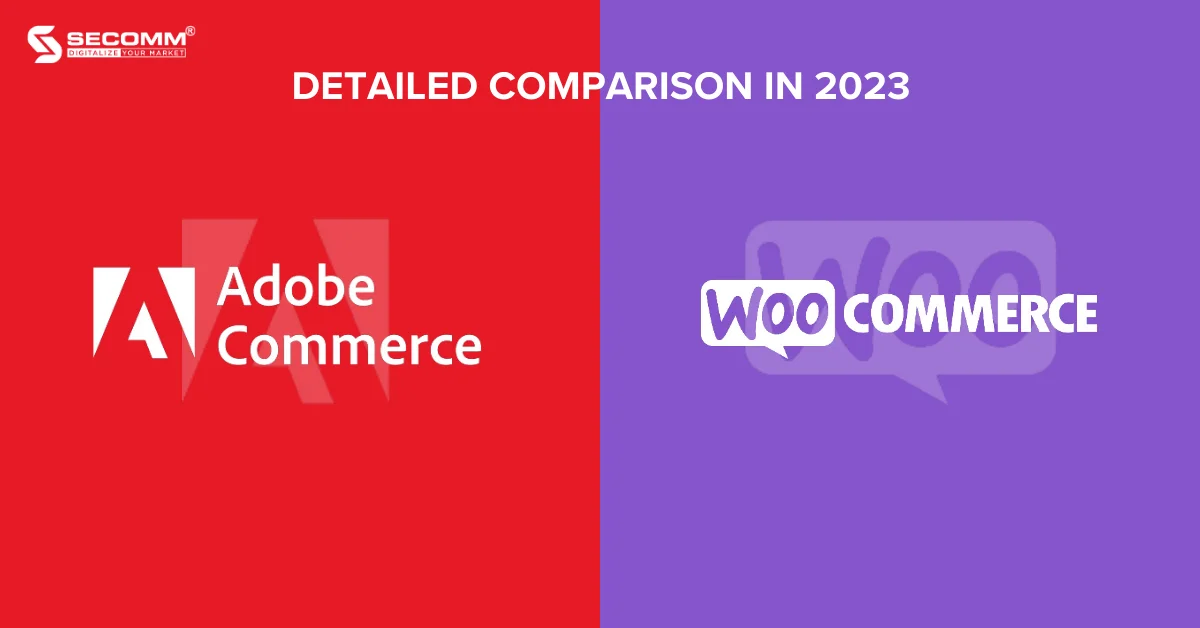
Among the eCommerce platforms that businesses consider choosing to develop their online stores, the two names Adobe Commerce and WooCommerce are always put on the scale for comparison.
Both are suitable for small and large businesses to build websites due to their flexible customization capabilities and high scalability. However, there are significant differences between WooCommerce and Adobe Commerce that are worth noting.
Adobe Commerce, formerly known as Magento Commerce, is an open-source eCommerce solution designed for medium to large-scale businesses, particularly those undergoing rapid growth and with high demands for customization and scalability.
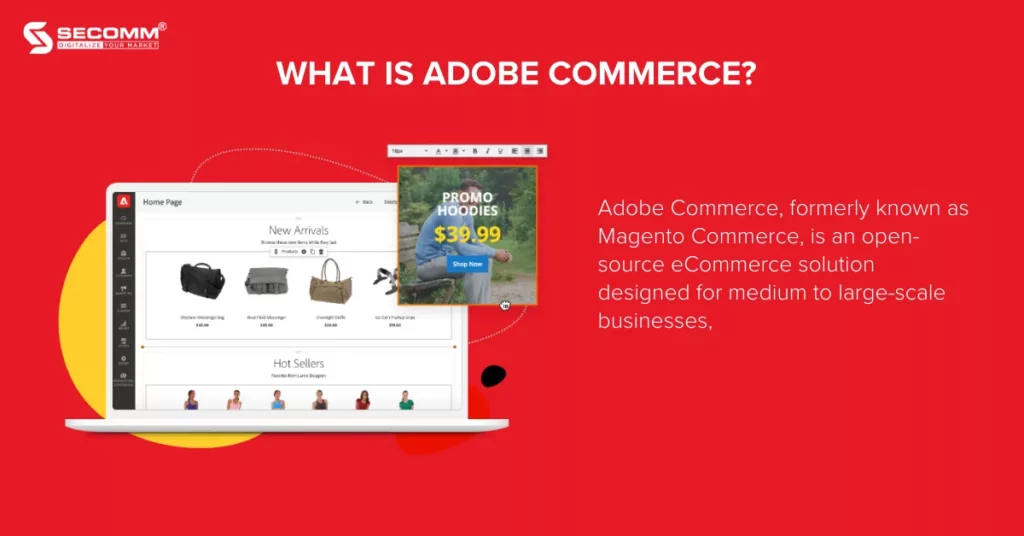
Currently, Adobe Commerce offers two different version options:
Related article: Top 20 eCommerce websites using Adobe Commerce (Magento)
WooCommerce is an open-source eCommerce plugin developed for the WordPress platform, a widely used Content Management System (CMS) for creating and managing websites.
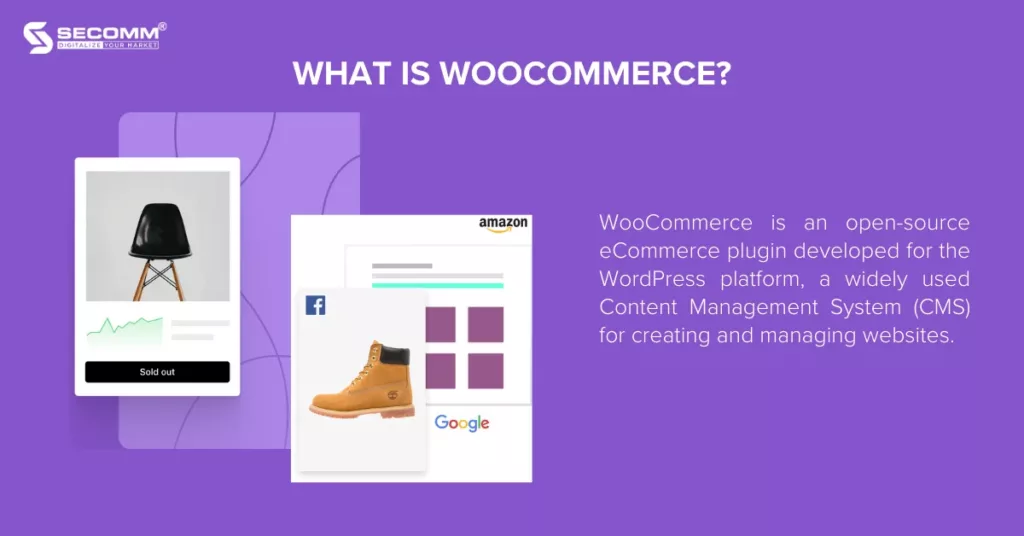
Consequently, WooCommerce is favoured by many businesses utilizing WordPress to develop their eCommerce websites.
Related article: Top 20 eCommerce websites using WooCommerce
Adobe Commerce and WooCommerce are two popular eCommerce platforms, but each platform serves different business needs due to differences in deployment costs, feature systems, scalability, and security.
The deployment costs of Adobe Commerce will depend largely on the version chosen by the business.
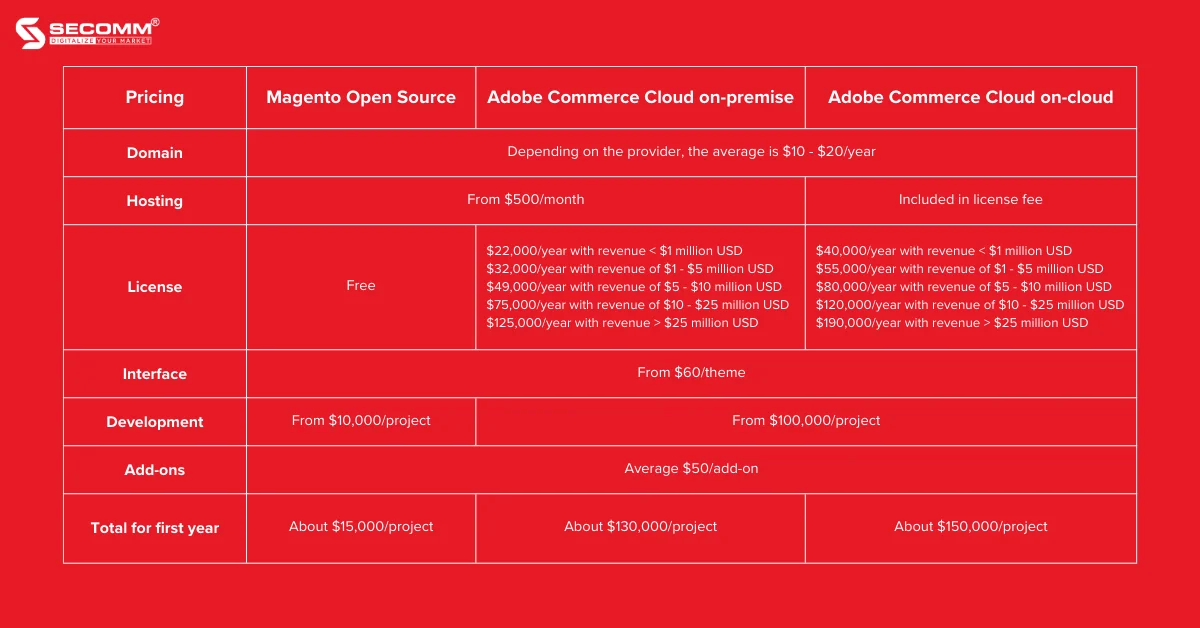
It can be seen that the deployment cost for an eCommerce website on Adobe Commerce is relatively high, starting from $15,000 per project for the Magento version and $130,000 per project for the first year with the Adobe Commerce version.
In contrast, the cost of using WooCommerce is entirely free, and the website construction cost is also relatively more budget-friendly compared to Adobe Commerce. Below are some estimated costs for deploying an eCommerce website on WooCommerce:
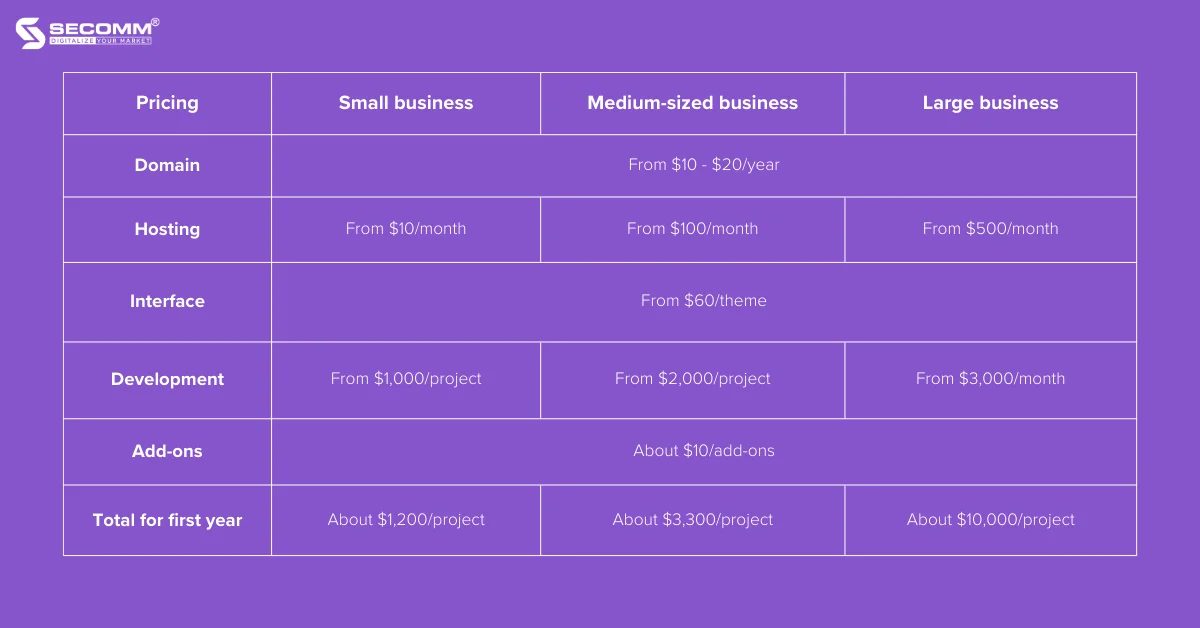
Note: These are only cost estimates. Actual costs may vary depending on factors such as needs, service providers, and optional features.
Adobe Commerce and WooCommerce are both comprehensive eCommerce platforms covering everything from A to Z. Both have their advantages and disadvantages, catering to the diverse functional needs of businesses.
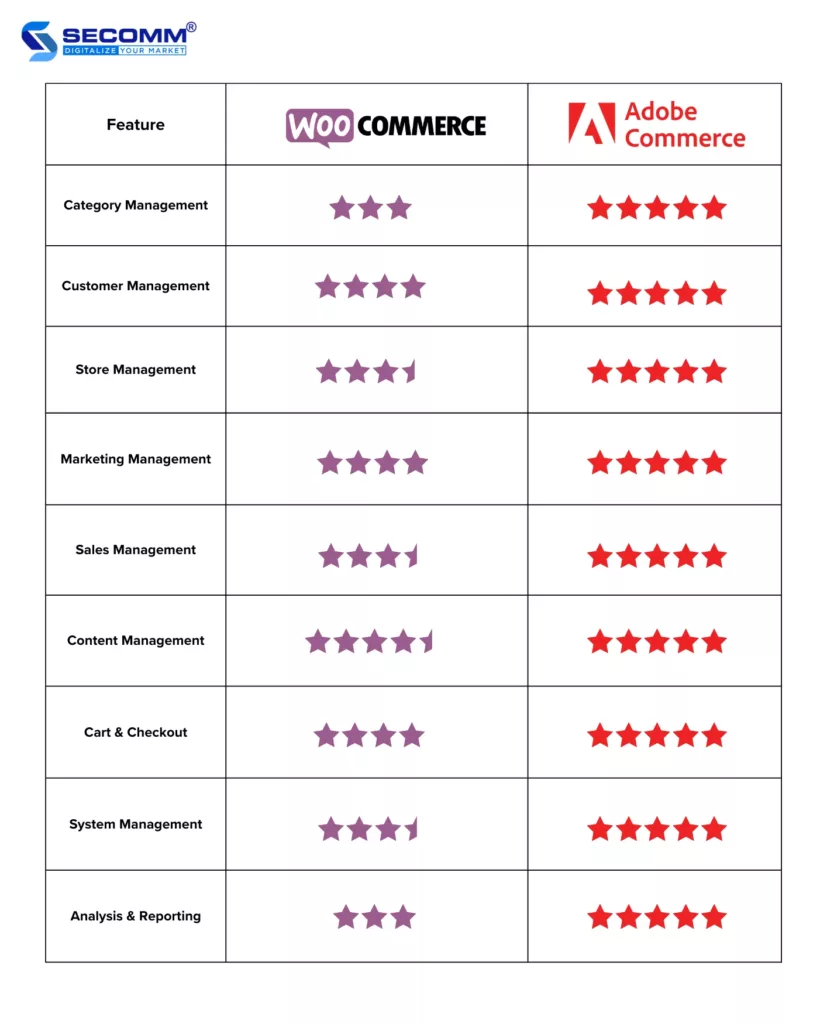
In addition to the basic feature set, businesses also need to consider advanced features that the system can accommodate.
It can be seen that the feature system of Adobe Commerce is more comprehensive than WooCommerce, covering both basic and advanced functionalities.
Therefore, for small to medium-sized businesses just starting in eCommerce, WooCommerce is a suitable choice. If the brand is a large enterprise with the need to build a large, complex online store, Adobe Commerce would be a perfect choice.
Read more: Top 10 Features To Increase eCommerce Website Revenue
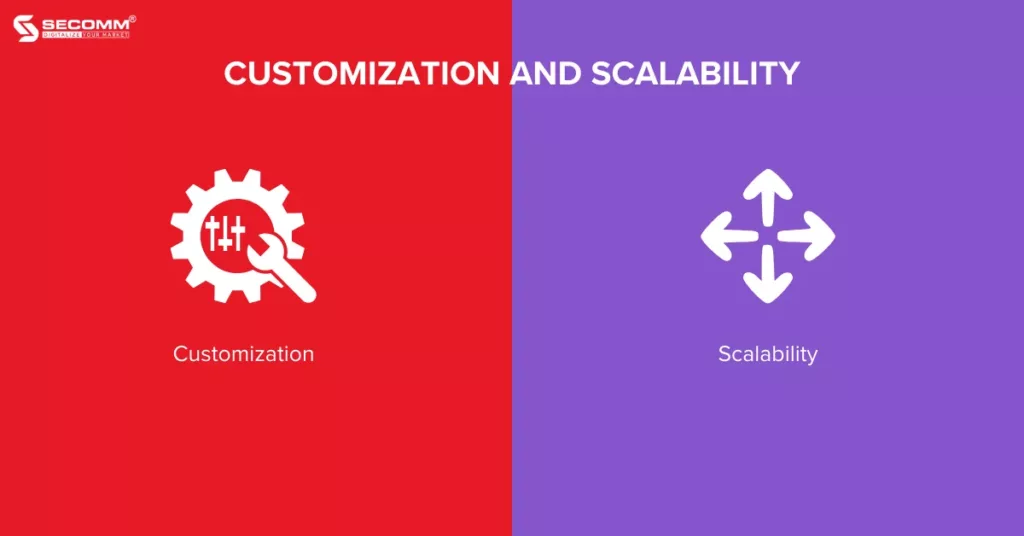
Adobe Commerce is an open-source platform, especially the Magento Open Source version, meaning developers can access the source code, making customization easier. This allows businesses to create features and integrate customizations to meet specific needs.
Similarly, WooCommerce also provides high customization capability with numerous available themes, plugins, and apps.
However, as a WordPress plugin, WooCommerce’s customization capability is not as extensive as Adobe Commerce.
Both platforms have high scalability to handle traffic and large transaction volumes. However, Adobe Commerce’s scalability is higher than WooCommerce’s, especially for businesses with large, complex product catalogues or significant inventory management needs.
In summary, Adobe Commerce offers higher customization and scalability capabilities compared to WooCommerce. Still, the website development process with Adobe Commerce is more complex, requiring developers with substantial experience and technical expertise.
Adobe Commerce and WooCommerce both provide features and tools for securing customer and business data. However, there are some notable differences in security capabilities between these two platforms.
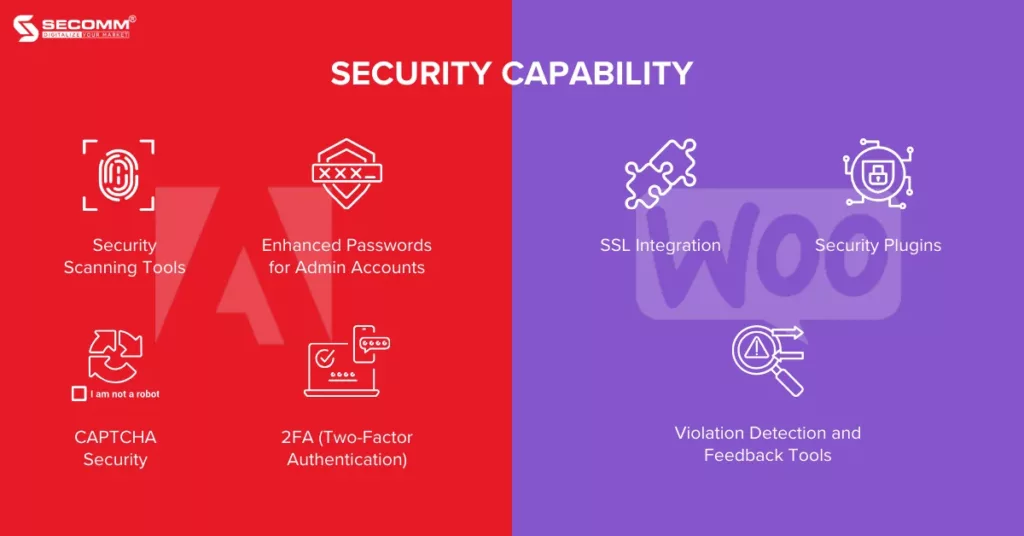
Adobe Commerce offers a range of security features and tools, including:
WooCommerce also provides some security features and tools, including:
Similar to the above factors, Adobe Commerce is generally considered to have higher security compared to WooCommerce.
It can be seen that Adobe Commerce is rated higher than WooCommerce in many aspects. However, while WooCommerce is known for being a user-friendly platform, making it easy for businesses without strong technical capabilities to quickly deploy, Adobe Commerce requires a professional team to build and manage a highly customized, scalable, and complex system.
In general, WooCommerce is suitable for small to large businesses using WordPress, wanting to start e-commerce deployment, and requiring basic customization and expansion solutions. However, Adobe Commerce offers flexibility, customization, and scalability, making it more suitable for corporations with complex system requirements.
In reality, the more flexible and customizable platforms with high scalability, the more complex and costly the deployment process becomes. Therefore, businesses need to consider the scale and development needs to make an appropriate choice.
With deep expertise and the development of complex eCommerce systems for clients such as Changi Airport Group (Singapore), Trentham Estate (Australia), and The Warehouse (Vietnam), SECOMM understands the challenges in choosing a platform and deploying eCommerce that businesses are facing.
Contact SECOMM now or call directly at the hotline number (028 7108 9908) for free advice on the eCommerce website building roadmap!
Read more: Shopify Plus vs Adobe Commerce: Key Differences 2023
 2
2
 5,975
5,975
 0
0
 1
1Subscribe to get the latest eBook!
Hotline